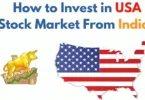Investors are frequently drawn to the vibrant world of mid-sized companies within the vast landscape of the stock market. These businesses make up the so-called Midcap Index, which sits between large-cap behemoths and small-cap startups. We will examine the intricacies of the Midcap Index Fund in this piece, including the reasons behind investors’ attraction to it, its distinct features, and the possible advantages and disadvantages of investing in mid-sized businesses.
What is Midcap Index?
A midcap index comprises companies ranked 101–250 on the stock market with market capitalizations ranging from Rs. 5,000 crore to Rs. 20,000 crore. Investment products such as midcap mutual funds use midcap indexes as benchmarks. In order to provide the best returns, these funds seek to replicate the midcap’s performance. The two most widely used mid cap indexes in India are the NSE (Nifty) midcap and the BSE (Sensex) midcap index. Let’s examine the midcap’s features and other specifics in more detail.
What are the Features of Midcap Index Fund?
- Market Capitalisation: The market capitalization of mid-cap companies ranges from Rs. 5,000 crore to Rs. 20,000 crore. Only these companies are tracked by the index.
- Growth Potential: Investors who are willing to invest in funds related to the index have a solid base thanks to the midcap index. The businesses included in the midcap have the ability to grow into large-cap businesses. Investors now have the chance to take advantage of these companies’ growth potential.
- Diversification: A wide variety of sectors are usually represented by mid-cap indices. This lowers the risk of investing in a single sector and makes it easier to be exposed to several sectors.
What are the Different Types of Midcap Index Fund in India?
- Nifty Midcap 50 Index: The National Stock Exchange of India (NSE) is responsible for maintaining this index, which follows the performance of 50 mid-cap stocks that are listed on the NSE.
- Nifty Midcap 100 Index: The NSE is responsible for maintaining this index, which follows the performance of 100 mid-cap stocks that are listed there.
- Nifty Midcap 150 Index: The following 150 businesses (those ranked 101–250) according to NIFTY 500’s total market capitalization are represented by NIFTY Midcap 150. The goal of this index is to evaluate the performance of businesses with mid-market capitalization.
- S&P BSE MidCap Index: The Bombay Stock Exchange (BSE) is responsible for maintaining this index, which evaluates the performance of mid-cap stocks that are listed there. The S&P BSE MidCap is intended to represent the remaining 15% of the S&P BSE AllCap’s market capitalization, following the large-cap index.
- BSE Midcap Index: The BSE is also responsible for maintaining this index, which follows the performance of the mid-cap market segment.
Why Should You Invest in Index Mutual Funds that Track Midcap Index?
- High Growth Potential: Compared to large-cap companies, midcap companies typically have more room for growth, which can lead to higher long-term returns for investors. Large-cap index funds have not historically outperformed midcap index funds.
- Diversification: The midcap index is made up of stocks from a variety of industries. This gives investors exposure and greatly diversifies their portfolios. Long-term risk mitigation is also aided by this.
- Low Cost Investments: Since the fund manager of an index fund does not actively trade stocks, the fund is passively managed. When considering index midcap funds as an alternative to actively managed funds, this results in a significant reduction of the fund management fee, also referred to as the expense ratio.
- Zero Human Bias/Error: There is no human bias or error involved because midcap index funds reflect the companies that make up the midcap index without the active involvement of fund managers. But take note that there could be a tracking error with the returns.
What are the Risks Associated with Midcap Index Fund?
- Volatility: Compared to large-cap stocks, midcap stocks are sometimes more erratic. This implies that there may be large price swings for the underlying securities. Investor risk may increase as a result.
- Company-Specific Risks: When compared to large-cap companies, midcap companies are typically less established. They run the risk of being negatively impacted by regulations, competition, and/or the economy.
- Market Risks: Midcap indices may change in response to shifts in the market, including shifts in inflation, interest rates, and economic expansion.
- Diversification: Due to their potential lack of diversity compared to other indices, some midcap indices may expose investors to concentration risk in particular industries or sectors.
Highlights of Nifty Midcap 150
| Particulars | Details |
| Index Name | NIFTY Midcap 150 Index |
| Index Variant | Nifty Midcap 150 Total Returns Index |
| Benchmarking Method | Free Float Market Capitalization |
| No. of Constituent Companies | 150 |
| Rank of Companies on Index | 101 – 250 on Nifty 500 index |
| Launched On | 01 April 2016 |
| Base Date | 01 April 2005 |
| Frequency of Calculation | Real-time calculation |
| Index Rebalance Period | Half – Yearly |
Difference between Midcap Fund and Large cap Fund
- Market Capitalisation: Market capitalization is the primary distinction between the midcap and largecap indexes. The biggest companies listed between 1 and 100 on the stock market with a market capitalization of at least Rs. 20,000 crore are usually included in large-cap indices, while companies listed between 101 and 250 with a market capitalization of between Rs. 5,000 crore and Rs. 20,000 crore are included in midcap indices.
- Growth Potential: Despite carrying a higher risk, midcap firms have the potential to offer greater growth than large-cap companies. However, if an investor remains committed over the long run, this risk may be greatly reduced.
- Diversification: Because there are more participating stocks in the mid-cap indices than in the large-cap counterparts, the sectors may be slightly more diverse.








Leave a Comment